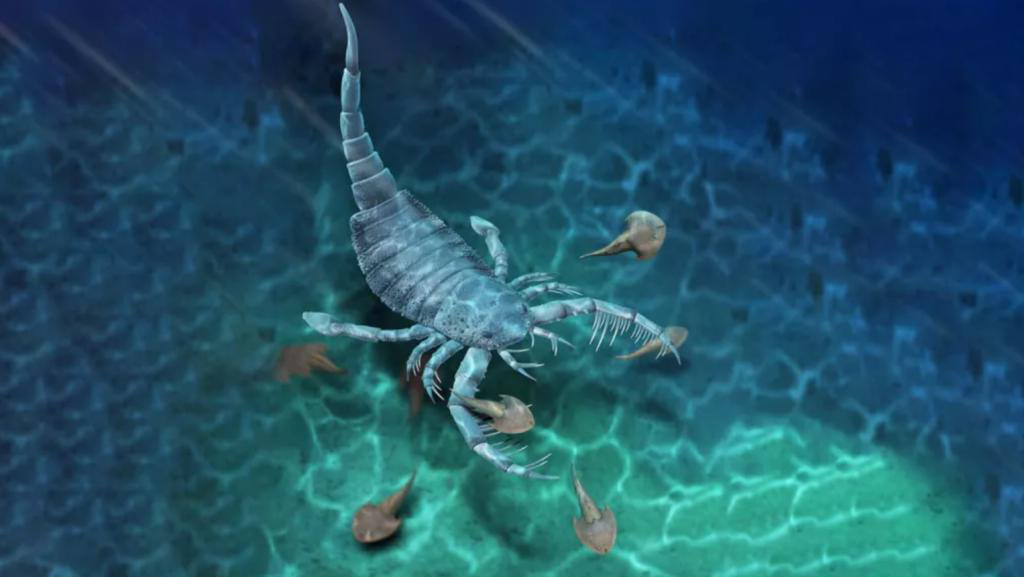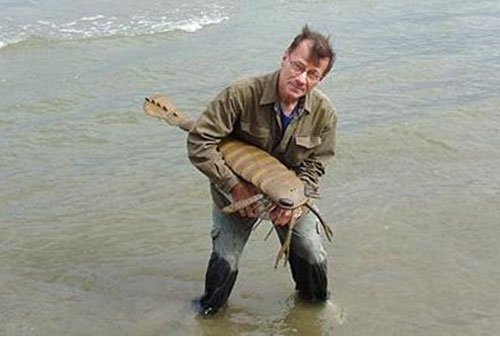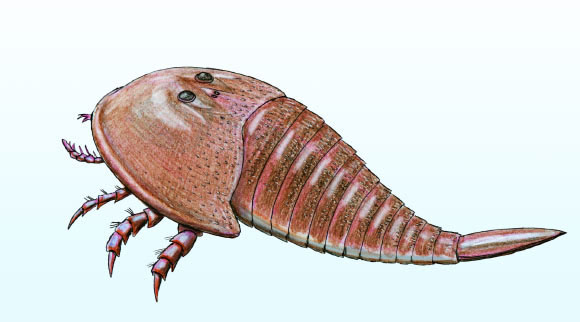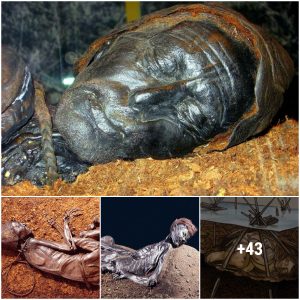In an ancient rock in the Carboniferous river delta was found a giant sea scorpion, belonging to the first large sea scorpion recorded in the world.
According to Sci-News, the strange sea scorpion, named Hibbertopterus lamsdelli, existed during the late Pennsylvanian Kasimovian period of the Carboniferous period.

It appears surprisingly intact as a “sealed monster” in the ancient stone of the Kinney Quarry, Bernalillo County, New Mexico state – USA. The bed where it was confined for about 303-307 million years is a bed of mostly ocher in color, multi-layered, containing limestone forms and is the type of rock that holds fossils.

A giant sea scorpion unearthed in a quarry in New Mexico – (Photo: Historical Biology).
The creature, which was analyzed by a team led by Dr Simon Braddy from the University of Bristol in the UK, showed it to be a member of the family Hibbertopteridae, an extinct group in the Order Eurypterida.
Order Eurypterida is an order of giant sea scorpions with about 250 species belonging to many different families. The newly excavated one may belong to the fourth largest species with a length of about 1.1m. The largest species of this order has a body length of up to 2.5m.

Teams of scientists have reconstructed an image of a sea scorpion that is much different from what we call “scorpions” today, with a multi-chambered body, a head bearing a shell like a great shield and many legs sprouting from the head region, fringed with thorns.

The shape is reconstructed through the image of the creature – (Photo: Historical Biology).
They lived in ancient rivers and seas. Despite their enormous size, paleontologists believe that they did not hunt large prey, but lay on the bottom and ate small crustaceans and worms.
Life on the bottom of the water is shown by the fact that the eyes are located on the top of the shell at the top.

The strange creature is still being analyzed. Preliminary insights into it have just been published in the scientific journal Historical Biology.





